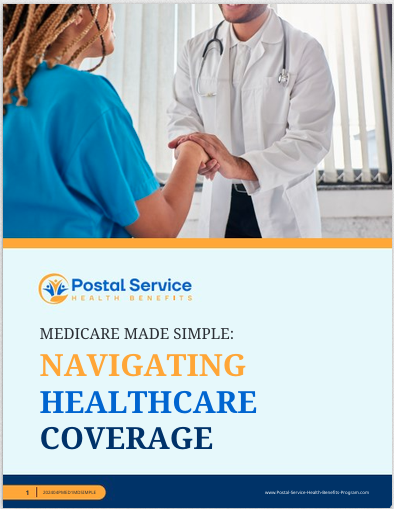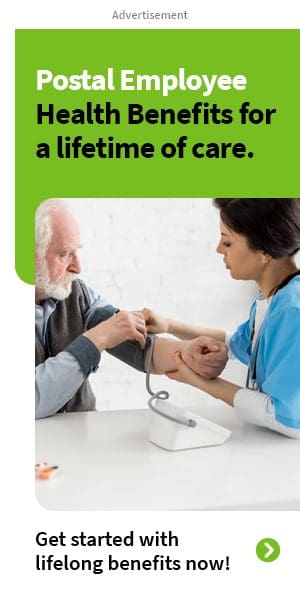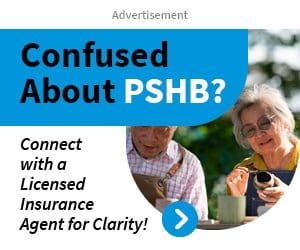Key Takeaways
-
If you’re a USPS employee or retiree, you’re likely eligible for PSHB—but there are exceptions that might surprise you.
-
Family members and former spouses may not qualify for PSHB and should explore other healthcare options.
Understanding the Basics of PSHB Eligibility
The Postal Service Health Benefits (PSHB) Program is now fully in effect for 2025, replacing FEHB for eligible USPS employees and retirees. The shift affects who can enroll, who can continue coverage, and who may need to look elsewhere. Whether you’re still working or enjoying retirement, it’s important to understand where you fit in.
Who Gets In Automatically?
Here’s the good news: if you’re a current career USPS employee or annuitant, you’re in. You’re automatically eligible for PSHB coverage. That includes:
-
Career USPS employees
-
USPS annuitants (retirees)
-
Survivors of USPS annuitants (as long as they were enrolled prior to the annuitant’s passing)
If you had FEHB coverage in 2024, you’re generally transitioned to a similar PSHB plan in 2025 unless you chose something different during Open Season. You don’t need to re-enroll unless you want to switch plans.
The Medicare Requirement for Some
For annuitants and eligible family members who are 65 or older, or otherwise eligible for Medicare, there’s a key new rule: You must enroll in Medicare Part B to maintain PSHB coverage—unless you qualify for an exception.
Some of the exceptions include:
-
You retired on or before January 1, 2025, and are not enrolled in Part B.
-
You’re an active USPS employee who is 64 or older as of January 1, 2025.
Everyone else in that age group needs Part B to stay in the PSHB plan.
If You’re a Family Member, Read This
Not all dependents and family members qualify automatically. PSHB uses the same dependent eligibility rules as FEHB, but it’s still good to check your status.
Eligible Family Members:
-
Legal spouse
-
Children under 26, including adopted and foster children
-
Children over 26 who are incapable of self-support due to a disability (as long as the condition began before age 26)
Who Doesn’t Qualify:
-
Parents or in-laws
-
Siblings
-
Adult children over 26 who aren’t disabled
-
Ex-spouses (even if they were covered during your marriage)
If you’ve recently gone through a divorce, make sure you notify the plan immediately. Your ex’s eligibility ends the day the divorce is final. Continuing coverage for them would be considered fraud.
What If You’re a Non-Career or Temporary USPS Employee?
Here’s where things get a bit trickier. Non-career employees, including those in temporary or seasonal roles, aren’t eligible for PSHB coverage. That includes:
-
City Carrier Assistants (CCAs)
-
Rural Carrier Associates (RCAs)
-
Postal Support Employees (PSEs)
If you’re in this group, you might still qualify for limited health coverage through the USPS under separate programs, but not under PSHB. You’ll need to explore other healthcare options, such as:
-
Marketplace plans
-
Medicaid (depending on your income and state)
-
Coverage under a spouse’s plan
What Happens If You Missed the Enrollment Window?
The Open Season for 2025 ran from November to December 2024. If you didn’t make any changes, you were automatically transitioned into a comparable PSHB plan.
But what if you had a Qualifying Life Event (QLE) after that? You can still make changes outside of Open Season in cases like:
-
Marriage or divorce
-
Birth or adoption of a child
-
Death of a covered family member
-
Loss of other health coverage
You usually have 60 days from the date of the event to request changes. Don’t miss that window, or you might be stuck without the right coverage.
Retirees Who Opted Out of Part B: What Now?
Some retirees might have skipped enrolling in Medicare Part B in the past because they didn’t see the need. In 2025, that decision could cost you access to PSHB if you’re not exempt.
If you’re a retiree who:
-
Turned 65 after January 1, 2025, and
-
Chose not to enroll in Medicare Part B
…you won’t be able to keep your PSHB plan. The rules are strict.
If you change your mind, you may be able to enroll in Medicare Part B during the General Enrollment Period (January 1 to March 31 each year), but coverage won’t start until July 1—and you could face a late enrollment penalty.
Survivors and Children: Are You Still Covered?
Survivors of USPS annuitants remain eligible only if they were enrolled in a family PSHB plan at the time of the annuitant’s death. If that coverage was dropped or changed, they could lose eligibility.
Children aging out of the plan (turning 26) will also need to find another option unless they qualify under the disability exception. Options include:
-
Their own employer-sponsored plan
-
Medicaid or Marketplace coverage
Don’t assume you’ll stay covered—double-check based on your age and dependency status.
What About Former Spouses With a Court Order?
Divorce settlements can get messy, but here’s a clear point: former spouses aren’t eligible to remain on your PSHB plan—even with a court order. However, they may qualify for coverage under the Temporary Continuation of Coverage (TCC) provision for up to 36 months after the divorce.
TCC is not automatic. The former spouse must:
-
Apply within 60 days of losing coverage
-
Pay the full premium (without government contributions)
It’s a temporary fix, not a long-term solution.
Planning Ahead for Major Life Changes
Whether you’re retiring, switching to Medicare, or going through a life change like a divorce or death in the family, your PSHB eligibility could shift. It’s smart to review your options each year during Open Season—or sooner if something big happens.
Use this checklist to stay on top of your eligibility:
-
Are you a USPS career employee or annuitant?
-
Are you (or a family member) turning 65 soon?
-
Are you planning to retire this year?
-
Have you gotten married or divorced recently?
-
Are your children aging out of dependent coverage?
Your Options If You’re Not Eligible for PSHB
If PSHB isn’t in the cards for you—whether due to your employment status, age, or dependency rules—you still have several other routes for coverage.
Explore These Alternatives:
-
Health Insurance Marketplace – Offers individual and family plans, often with income-based subsidies.
-
Medicaid – Available based on income and state rules.
-
Spouse’s Employer Plan – If your partner has access to group insurance, you may be eligible as a dependent.
-
COBRA or TCC – Temporary options that extend previous coverage, but often at a higher cost.
Whatever path you take, don’t go without coverage. A gap in insurance can lead to significant out-of-pocket costs, especially if something unexpected happens.
Why Staying Informed Is Key in 2025
With all the moving parts involved in the PSHB transition, the last thing you want is a surprise bill or loss of coverage. Being informed helps you:
-
Stay compliant with Medicare requirements
-
Ensure your family is properly covered
-
Avoid penalties or lapses in insurance
Annual review is essential—especially as your age, household, and job status change. Keep an eye out for communication from USPS and OPM, and don’t ignore any forms or notices that hit your mailbox.
Still Not Sure Where You Stand? Let’s Talk
If you’re confused about your PSHB eligibility or whether a life event has changed your status, it’s time to speak with someone who knows the ins and outs.
Reach out to a licensed agent listed on this website to get personalized advice based on your situation. Whether you’re a USPS employee, a retiree, or a family member, making the right healthcare decisions in 2025 starts with understanding where you stand.






